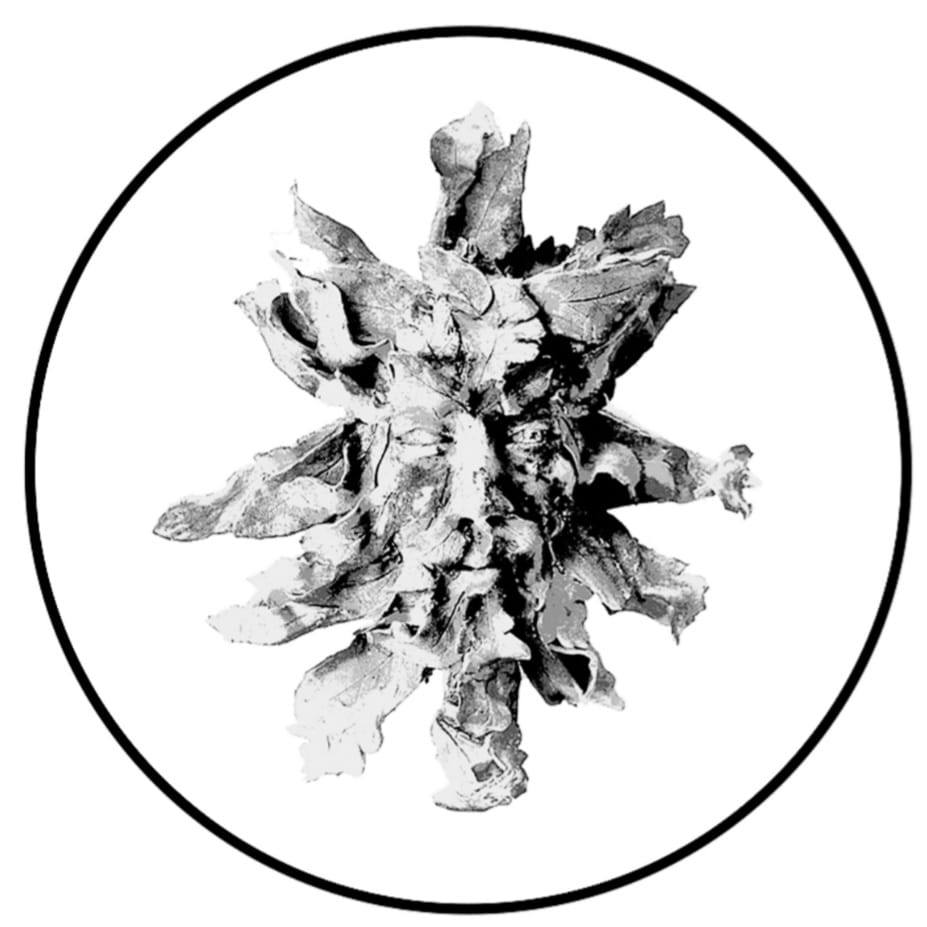Bright Carvings | “Music from the Underground Era”
Bright Carving Records started in 2023 and has already released eight previously unknown treasures into the world.
Either private press or just unreleased works of British artists from the late 60s and 70s. Acid Folk, Psych, Underground Rock, and Damn Right Unclassifiable are genres that best describe reasons that may make you want to pull up a chair and find out more from Glastonbury-based founder Jon Groocock.
What was your inspiration for the label?
Jon Groocock: I have been dealing second-hand collectible records (Noiseplate! and White Spring Records) mail order for decades and have always been interested in the really obscure stuff from my favourite period of rock: Underground music from the mid-60s to mid-70s, especially Private Pressings.
I have gathered you are a well-known collector. How long have you been collecting and what are your most treasured finds?
Since I was 13. And like all collectors, it ebbs and flows, but I’m also quite whimsical. I get obsessed with a label or a genre and buy everything I can, then stand back and wonder why I have all these unlistenable records! And then I sell them. I have all the UK-pressed Delmark Modern Jazz and Blues LP releases here at the moment. They are really rare, and I only actually like about five of them… madness. But I have a pretty comprehensive collection of classic British Underground rock, which is the core, and some of the heavy privates (not Dark though!). I’m happy to have Grannie, Bodkin, and Charge originals.
The records are very well put together. Could you tell me a little about how you put each package together?
Thank you, we try! First up, we get the best possible sound. This means master tapes if possible, otherwise the cleanest vinyl/acetate we can source. All our mastering is done by Reynolds Mastering. He is unquestionably the best sound restorer in the world; he does all the major box set re-releases, recently: The Four Seasons, Wishbone Ash, Al Stewart, etc. He is a wizard, and his studio is unique: 50% Starship Enterprise, 50% Sherlock Holmes Steam Punk. Some of his equipment is incredible. He did the early Seelie Court LPs. We then get them pressed by Vinyl Factory, the old EMI presses that Beatles LPs were made on. That way, they are flat and quiet. Our designer, Bobby Blisters, is an LP/CD sleeve specialist and about the best around. I’ve known him on and off for a very long time. He was in a brilliant Mod band, The Blisters, in the early 80s. We decided to laminate all sleeves so we could use barcode stickers rather than polluting the sleeve design with the 21st century, and we use the “fake” inner sleeve concept to showcase original labels and lyrics where possible. If there’s a usable original sleeve (like Music Box, Tim Phillips, NTP/Upstaged), we will base our design on that. If not, we work it out for ourselves, using posters, gig flyers, etc., and original/appropriate artwork.
NTP from the late 60s and early 70s are a brilliant example of artists and albums you’ve gathered. Could you tell me about how you approached the band?
It requires a lot of patience and detective work to track people down and approach them in the right way. Generally, once we are in touch, the artists are surprised and delighted. Occasionally, they are embarrassed or negative about a release, but this is rare.
Tim Phillips’s album ‘The Giant Tortoise’ is a beauty and very hard to describe. What is it and where does it come from? Can you give it a go or at least what it means to you?
The thing with ‘Tortoise’ is that it is really, really unusual. The number of unknown/unloved singer-songwriter/folky LPs from, say, the 1970s is quite high (and most of them have very obvious fatal flaws!). But from 1967?? Normally those are Bert Jansch knockoffs or straight folk, Peter, Paul & Mary style, or heavily religious. ‘Tortoise’ sticks out as a genuine piece of Hippy/Underground music. So rare, rare, rare. And Tim has a lovely voice and writes great, odd songs that nag their way in and stay there. It’s a period piece, sure, but it’s got an almost childlike timelessness about it. It’s not as “trippy” as the better-known Mark Fry, but I love it as much.
Robert Naylor’s ‘Skates’ is once again a unique work. How did you find Robert, and what was his story?
Robert was a very talented young man from Beckenham who went to bed one night at the age of 19 and never woke up. I’d had his only LP, recorded when he was 17, for a few years and loved it; simple and stark but inventive, superb guitar playing (he studied classical guitar at Surrey University), great songs, weird lyrics, right up my street. So, I gathered the internet footprint together and rapidly discovered everyone who was connected was also dead, but we have our ways. I tracked his mother and brother down, who were delighted to support a release. We were just finalizing things when David, his brother, said he had recordings from the University, a year after his LP, and asked if we were interested. And that was ‘Skates.’ I was completely blown away when I heard the tapes.
Music Box’s ‘Fun Palace’ is bewitching to say the least. It has been played heavily in my home, despite each time I think there’s a ghost in the house or a well has just fallen through the roof—ha. Where did you find it?
One of the great enigmas, and an incredible atmosphere. They were almost certainly Bristol University students; my original apparently turned up in a Bristol charity shop, but clearly, they are either no longer with us or don’t want to be found. It’s been a known rarity for a long time, and I just thought it needed to escape from the hands of half a dozen collectors.
It seems that one doesn’t know who made it, but there is a mention of a player from the record giving you a copy. Who was this? Can you help with the mystery?
No, the only clue was a now inactive record dealer who put one up on eBay some years ago and was contacted by a band member/friend who gave him a little information and sold him a couple of copies.
Do you feel some of these acts had ambitions beyond the work and art?
With NTP, for instance, Robert was writing songs and making a few vinyl copies of each collection just to have a permanent record of them. Then there were albums that were made to commemorate a period of musical life that was coming to an end. They’d make the record and then go their separate ways. Terraplane was a bit like that. Generally, though, the main motivation was not to use the record to try to break into the record industry (although Tim Phillips did send his off to Apple and Raven had a rather half-hearted go). This is why the records, for the most part, have idiosyncratic charm. They are not trying to pull the ropes that needed to be pulled to get a record contract. There was obviously a range of motivations, but the main motivation seemed to be just to make a record. It is amazing how much is emerging after all these years that is really rather good.
What makes you want to do a project?
The questions I ask myself when I am introduced to something are: Is it charming? Is it authentic? Is it sincere? Those are things I look for. If it’s genuinely all those things, then there may well be a fundamental value to it even if it’s not brilliant musically. I am completely turned off by cynical “by the numbers landfill rock” from the era. It’s got to have something much, much more to it. Generally, with this label, the nearer I get to the “real” music business, the worse it has been, personally and musically. I’m not really interested in anything that’s been near a major record label (with the notable exception of the sublime Northwind).
I hesitate to describe what I’m looking for as “Outsider Music” though, because there is a connotation of Outsider Music being crap, and that is discordant with what we are trying to do here, which is to bring music that is of real value out of the darkness, in from the shadows. Certainly, our records serve an esoteric taste, but every now and then you hope there’s something that spills over into the real world, and normal people will start saying this is, objectively, just really good, like Robert Naylor’s ‘Waterfalls,’ for instance.
I wonder where you see Bright Carvings going in the future other than just the steady path you’re already on?
Well, there are a couple of side projects we’re looking at: firstly, our “Reference Series” for material that’s maybe not well enough recorded, or too short, or esoteric (even for us), or with limited appeal but we love. We were going to put these on CD (and we may revisit that, although my gut tells me to stay with vinyl), but we are exploring how to make a 113-copy release work at a sensible price. The first of these we’re looking at is, actually, Robert Naylor’s 1st LP, and I think we will pilot that in the summer. I think we will do a CD/Double CD label sampler once we have done 10–12 releases, with a mix of the best tracks from the LPs, unreleased/unused tracks, and also some from odd singles and EPs that are not big enough for their own releases. We’d sell that cheaply as an introduction to the label, like those old Island Samplers.
You’re based in Glastonbury. Does the area have an impact on your ideas or label?
We’ve been here 24 years, so it must do. It’s a unique town and a beautiful, spiritual place to live. We’re lucky to be here, and they’re lucky to have us.
Thanks, and please have the last word.
If you know of anything out there that might be of interest to the label, please get in touch. These wonderful people aren’t getting any younger!
Nick Holton
Bright Carvings Official Website / Facebook / Instagram / YouTube




